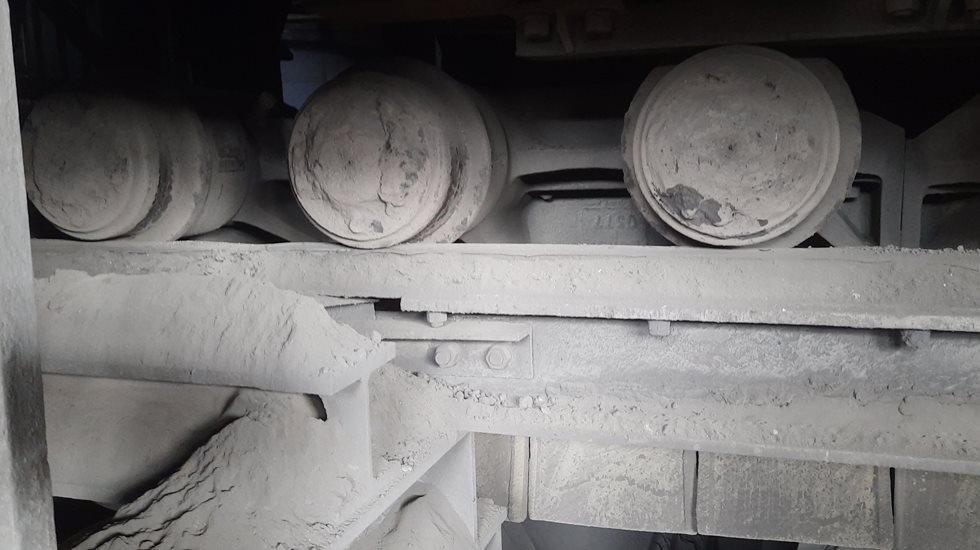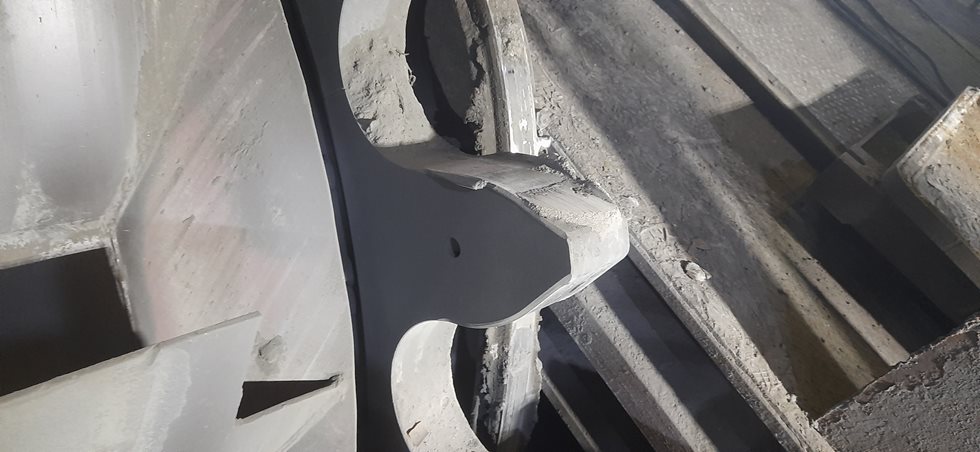Immediate actions: Visual and vitals inspection + quick fixes
Due to the nature of pyro equipment, an immediate shutdown is likely not possible. Typically, the first step is to perform an inspection and make minor adjustments, realignments or quick fixes to address immediate concerns. In this particular case, the service engineer visually inspected the drive, the tipping stations and both the carrying and return machine strands. In addition, we recommend implementing maintenance practices that prioritize safety and minimize risks. A comprehensive maintenance program should be established, encompassing routine cleaning, lubrication, adjustment of mechanical components and calibration of temperature and pressure sensors. By adhering to these practices, other potential issues can be mitigated, and the operational continuity of the equipment can be ensured until a long-term solution is implemented. Therefore, training sessions were organized on-site for the customer’s maintenance crew.
Short-term actions: Mechanical verification and part change-out
The objective of short-term actions is to bridge the gap until a long-term solution can be implemented. These actions focus on addressing the concerns identified during the inspection that can be implemented with minimal service interruption. In cases where damaged areas of the equipment are identified, prompt replacement of these components can provide immediate relief and ensure the continued operation of the pyro equipment. Regarding the case of our customer in India, the inspection revealed the occurrence of sawtooth shapes that could be attributed to the deterioration of the sprocket teeth and curved rails. Several parts required a change-out to avoid further damage: drive station and tipping station curved rail and sprockets, return and carrying strand rails, sagged cars and slide bars.
It is worth noting that while most short-term solutions serve as temporary measures to maintain operations until a permanent solution is implemented, there are instances where these fixes can effectively address the issue at hand.


